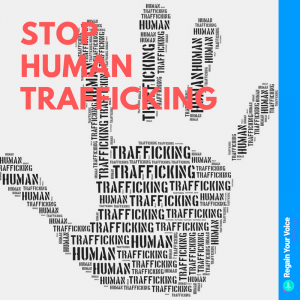 One of the first safety tips we are taught as children is to never get into a car with a stranger. But, every time we get into an Uber or a Lyft that is exactly what we are doing. There is a false sense of security – we assume that the drivers have been screened or criminal background checks were done – this is not always the case. Unfortunately ride share companies are not taking certain precautions to keep their customers safe. There is a lot more these companies could be doing and we believe they should be held accountable.
One of the first safety tips we are taught as children is to never get into a car with a stranger. But, every time we get into an Uber or a Lyft that is exactly what we are doing. There is a false sense of security – we assume that the drivers have been screened or criminal background checks were done – this is not always the case. Unfortunately ride share companies are not taking certain precautions to keep their customers safe. There is a lot more these companies could be doing and we believe they should be held accountable.
Until ride share companies put safeguards into place to weed out perpetrators, riders should be cautious. There are some steps ride share riders can take to help keep themselves safer. These suggestions are not meant to shame anyone or suggest that there is something specific you can do to avoid being the victim of a sexual assault. If you are assaulted, it is never your fault.
1. Wait Inside
If possible, wait inside until the app shows that your driver has arrived.
2. Double Check
Make sure you’re getting into the right car with the right driver by matching the license plate, car make and model, and the driver’s name and photo with what’s provided in your app. Never get in a car where the vehicle or driver identity doesn’t match what’s displayed in your app.
3. Say My Name
Always ask the driver to confirm your name before you get in the car. Your driver sees your first name in their app. You can ask you driver, “Who are you here to pick up?” Don’t tell the driver your name. Avoid the temptation to say, “Are you here to pick up____?”
4. Don’t Tell The Driver Your Address
Always put your destination address in the app with booking the ride. That way the driver will see the address to your destination in his/her app. The driver should never have to ask you where you are going if you use this feature. If they do not know your destination or say they cannot see it in their phone – its best to nor proceed with the ride and call for a different driver.
5. Back Seat Rider
Always sit in the back seat. This puts distance between you and your driver. Your driver should be professional; therefore, he/she should not ask you to sit in the front with them, especially if you are alone. If you are with others, let them know that you would prefer a back seat. It’s also a good idea to sit behind the passenger’s seat, as opposed to behind the driver’s seat, so that you have a better view of the driver.
6. Share Your Status
While en route, tap “Share Trip Status” in the Uber app or “Send ETA” in your Lyft app to share your driver’s name, photo, license plate, and location with a friend or family member. They will receive a text or push notification that tracks your trip and ETA.
7. Don’t Accept A Free Ride
If the driver offers to give you a free ride and turn off the ride share app politely decline and let the driver know you are not comfortable with that. If possible end the ride and get another driver or cancel the ride if you haven’t left your pickup location.
8. Protect Yourself And Others
If you can, have someone waiting for you at your destination. If the driver offers or tries to get out and walk you to the door, calmly let them know that you don’t feel comfortable with that. Keep your phone handy, just in case you have to call 911.
If you have been drinking, you may be more vulnerable to a predatory driver. Many of us use these ride sharing apps as a designated driver and to avoid driving while intoxicated. So, if you are too inebriated to feel comfortable riding alone with a stranger, try to avoid it if possible. As for friends, do your best to make sure your friends get home safely. Tag along for the ride if you are worried about your friend getting home safely by themselves.
Being drunk doesn’t give someone the right to assault you. And you are not to blame if this happens. But we can try to reduced these types of assaults by looking out for each other after a night out.
9. Trust Your Gut
Trust your instincts and use your best judgment when ride sharing. If you ever feel that you’re in a potentially dangerous situation, you can call 911 by using the emergency button located in your Uber app or by dialing 911.
Anytime you call 911 from the Uber app, the app provides you with your real-time location and trip details that you can share with the dispatcher. In some cities, this information is provided directly to the dispatcher.
Lyft’s critical response team is available 24 hours a day, 7 days a week, and will call you as soon as possible after you request the call in-app.
10. Rate And Report
Always rate your trip/driver. Report all instances of sexual harassment or assault to the ride sharing company. Your reporting could protect someone else from abusive drivers. You always have the option of reporting an assault to the police as well, but that is entirely up to you.
If you have been assaulted by a ride sharing app driver, try to keep any evidence you can, such as screenshots of your ride and any potential DNA evidence. You can also visit the “Survivor Resources” section of our website to learn more about what you can do immediately following an assault.
If you think you may have been sexually assaulted you can find support online at rainn.org or call the National Sexual Assault Hotline at 800.656.HOPE (4673). To find out what legal options you have, we are here to answer your questions. All conversations and meetings are confidential and will not cost you anything. Whether or not you decide to file a claim is entirely up to you.
You can reach attorney Melissa Hague any time at our offices by calling 484-344-5850 or contact us by filling out the form in the “Contact” section of the site and she will respond to your message within 24 hours. All calls and information provided on the form are strictly confidential between you and Melissa.

